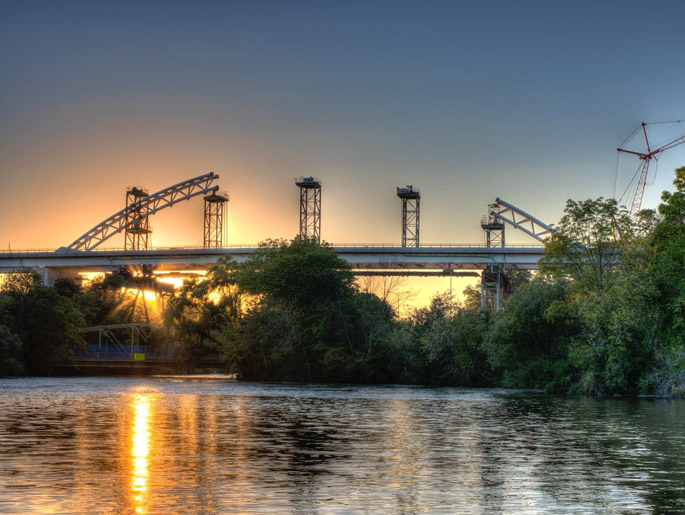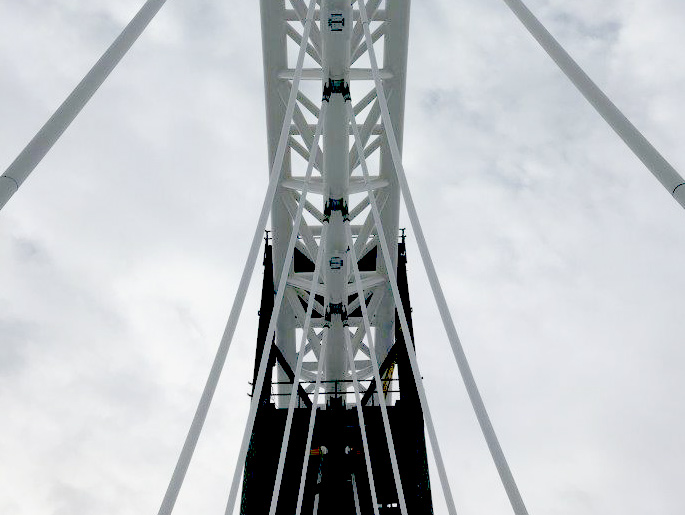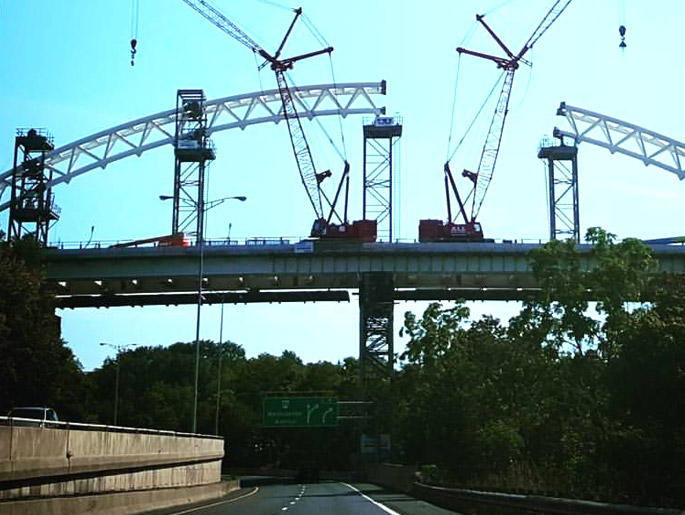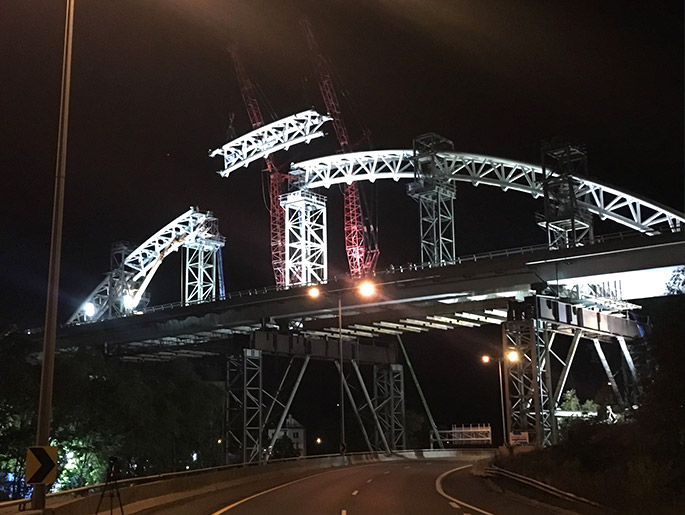



Burgoyne Bridge Erection
LOCATION: St. Catharine's, ON
CLIENT: Pomerleau / Structal
VALUE: $75 M (Approximate)
YEAR: 2014 (Ongoing - Currently Under Construction)
ROLE: Bridge and Construction Engineer, PSS Cable Specialist
CATEGORY: Construction Engineering
Noteworthy Project Experience
Complex global phasing, difficult geotechnical conditions, innovative girder launching, coordination/temporary support of existing services.
Project Description
The replacement bridge contains seven continuous spans with a total length of 333 meters including a 125 meter long signature arch span that spans over Twelve Mile Creek and Highway 406 in St. Catherine’s Ontario. The bridge replaces the existing 100 year old steel box truss / concrete deck structure located on the same footprint as the west deck of the new structure.
The arch span consists of a single space-truss arch carrying twin trapezoidal steel box girders that flank each side of the arch and cantilever to PSS steel cable hangers through transverse steel box girder floor beams located below each arch panel point. The six approach spans, ranging from 20 meters to 44 meters in length, consist of twin steel trapezoidal box girders and divided composite concrete decks. The superstructure is supported by tall reinforced concrete piers and abutments containing deep reinforced concrete caisson foundations. The arch contains internal thrust support in the form of bow string assemblies consisting of high strength, low-relaxation multi-strand post-tensioning assemblies.
Difficult geotechnical conditions results in the need for lightweight approach fills and strict construction conditions / phasing / loads to maintain stability of the slopes during all phases of construction. At the instruction of our client (Pomerleau), HEC has developed a cost-effective alternate lightweight South Approach design consisting of cellular concrete (γ=4.66 kN/m3) infill and tied reinforced concrete retaining walls with shallow foundations. HEC has also developed cost-effective temporary retaining walls along the Stage 1 / Stage 2 line to maintain traffic first across the existing bridge, followed by the east deck of the new structure. The temporary retaining walls are designed to be temporarily tied to the east permanent retaining walls to maintain stability of the wall during cellular concrete casting and, subsequently, under traffic surcharge loading when traffic is diverted onto the east deck.